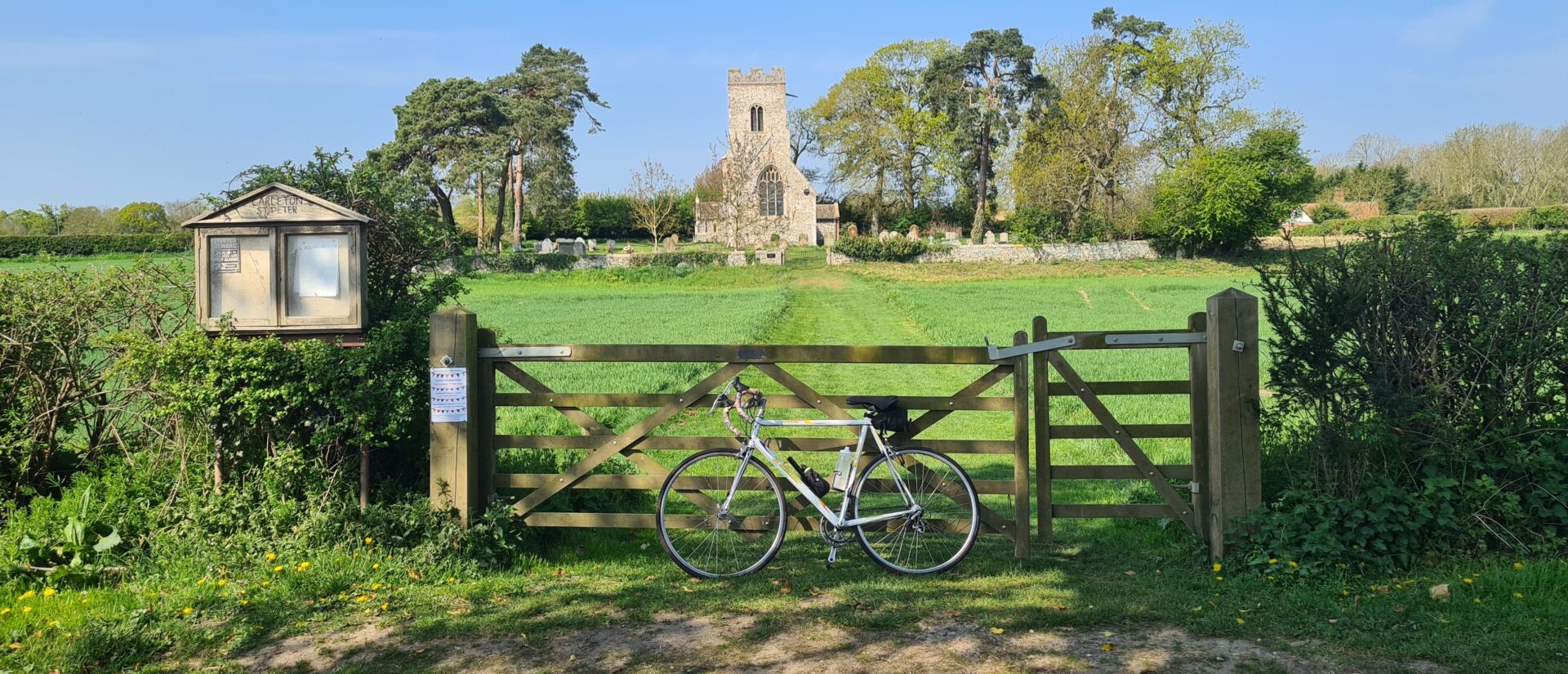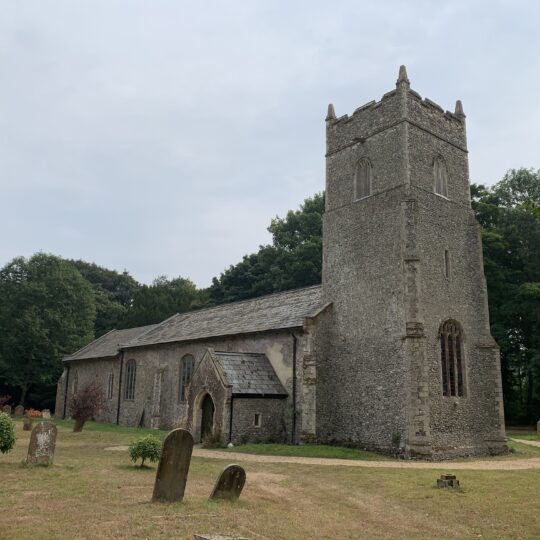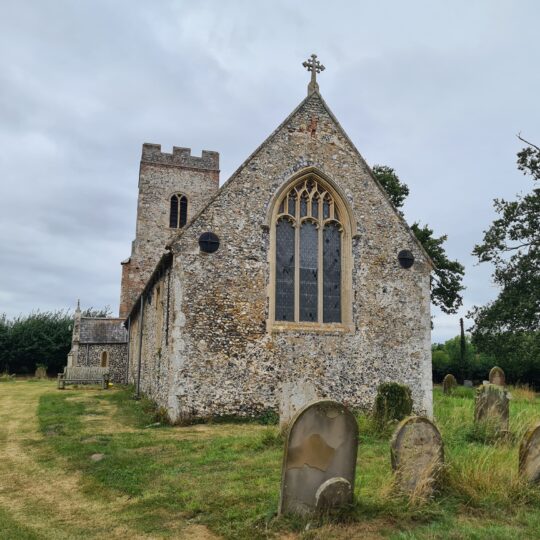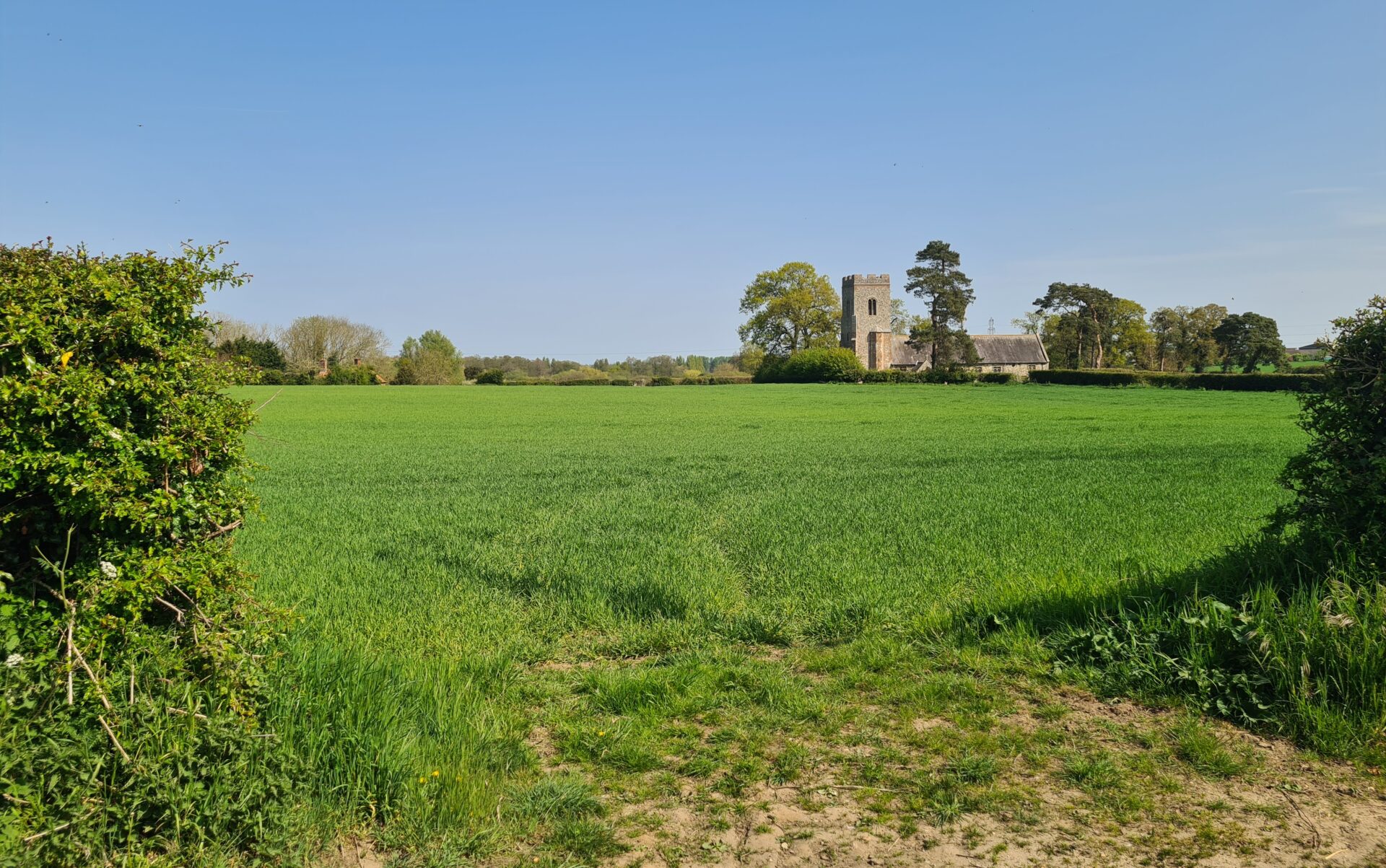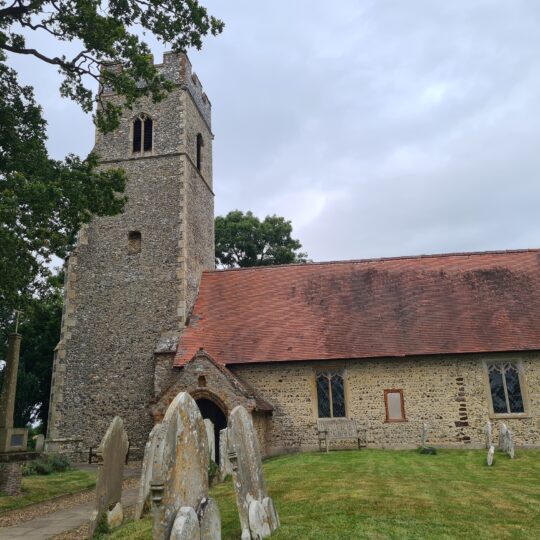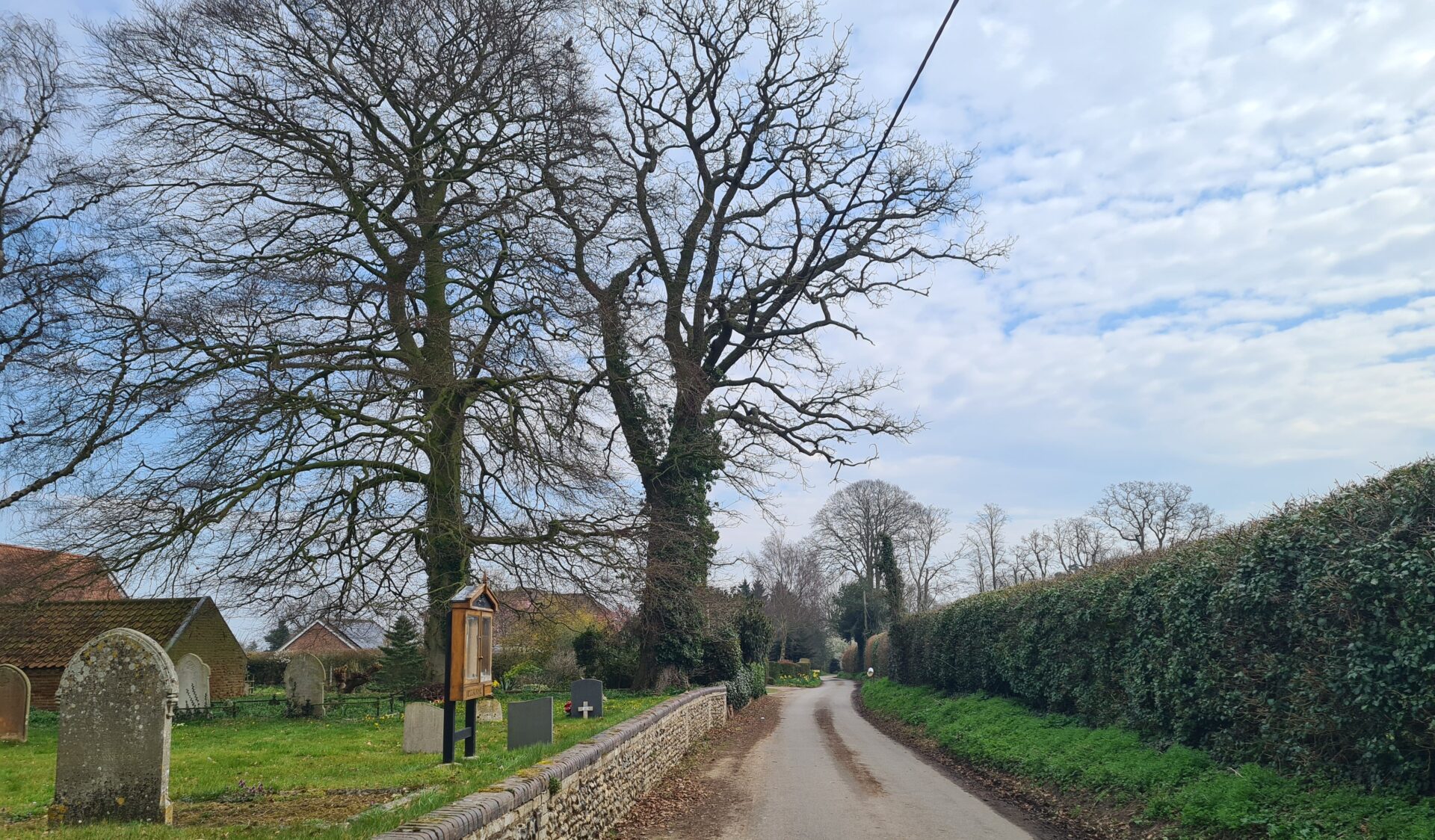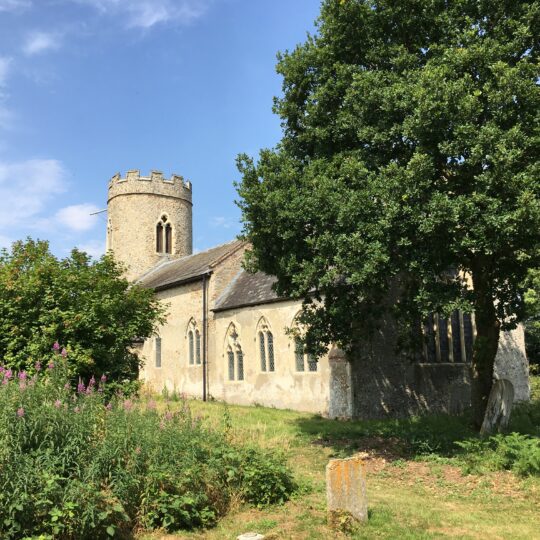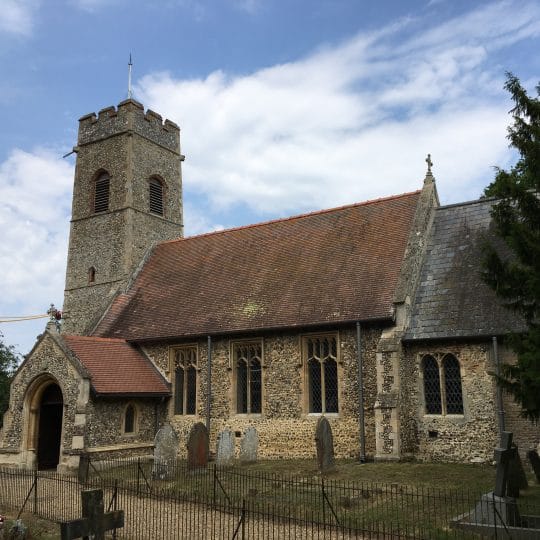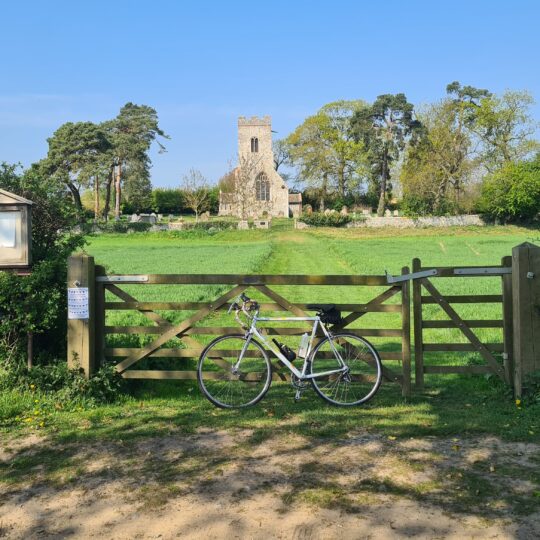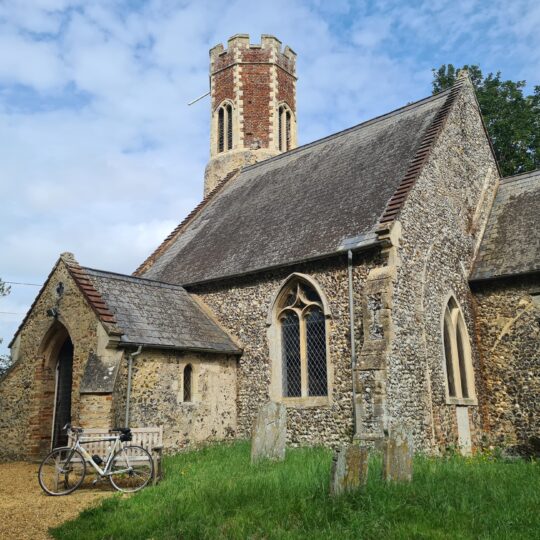Longer Cycling Route From Rockland St Mary
From the car park of Rockland Staithe turn left onto The Street. Carry on for about 5 miles and enjoy the views of the Broads on your left. Take in the sights of windmills, sails gliding by and wide Norfolk skies. The large building is the Cantley Sugar Factory, the first sugar processing factory in the UK. Today it produces up to 220,000 tonnes of sugar annually. You will pass what remains of Langley Abbey which housed Premonstratensian canons from 1195 to 1536. Some of the remains have been converted into a barn and visits can be arranged in advance. Continue until you get to a T junction; turn left onto Hardley Street and bear right at the fork. You will come across St Margaret’s Church, Hardley straight ahead.
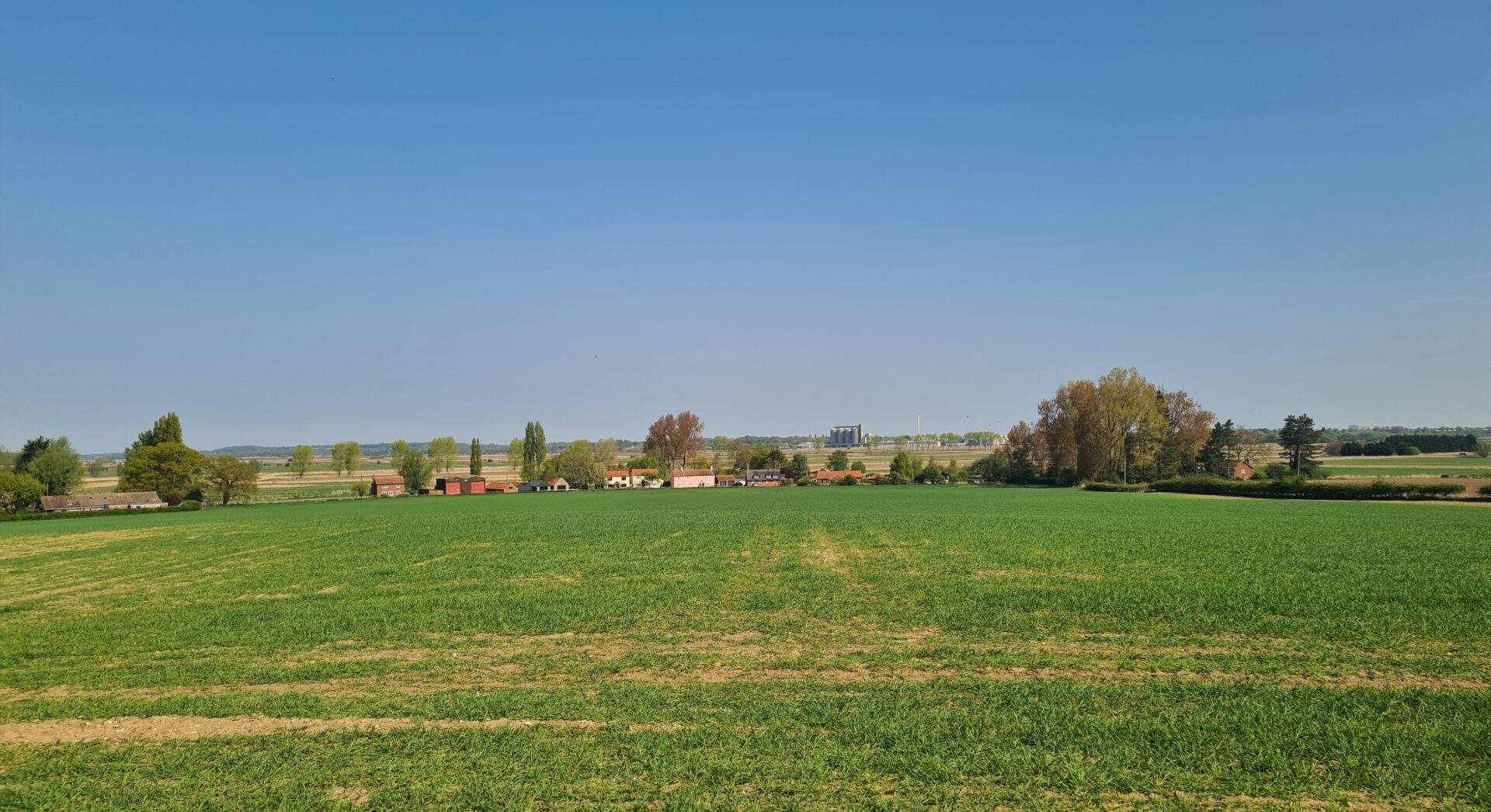
Hardley Church stands on high ground a mile north of the River Chet giving a wonderful view eastwards over the river, fields and marshes and is one of the churches visible when boating. St. Margaret’s remote position helped to protect it from earlier over-restoration, and it remains a largely unspoilt parish church where villagers have worshipped since Norman times. The round tower dates to the 11th century, the chancel dates to the 15th century and the vestry was added by the Victorians. The size of the church is evidence that the village had a much more affluent past, no doubt due to the trade from the nearby river. The importance of the river in local life is evident from the pictures of boats scratched into the pews. The church is frequently visited by hikers and holidaymakers. Inside there is a 15th century St Christopher wall painting; notice the fish swimming around his legs. There is a smaller St Catherine above the south doorway and the remains of consecration crosses. The ornate font features angels, lions and the symbols of the Evangelists.
St Margaret’s, Hardley
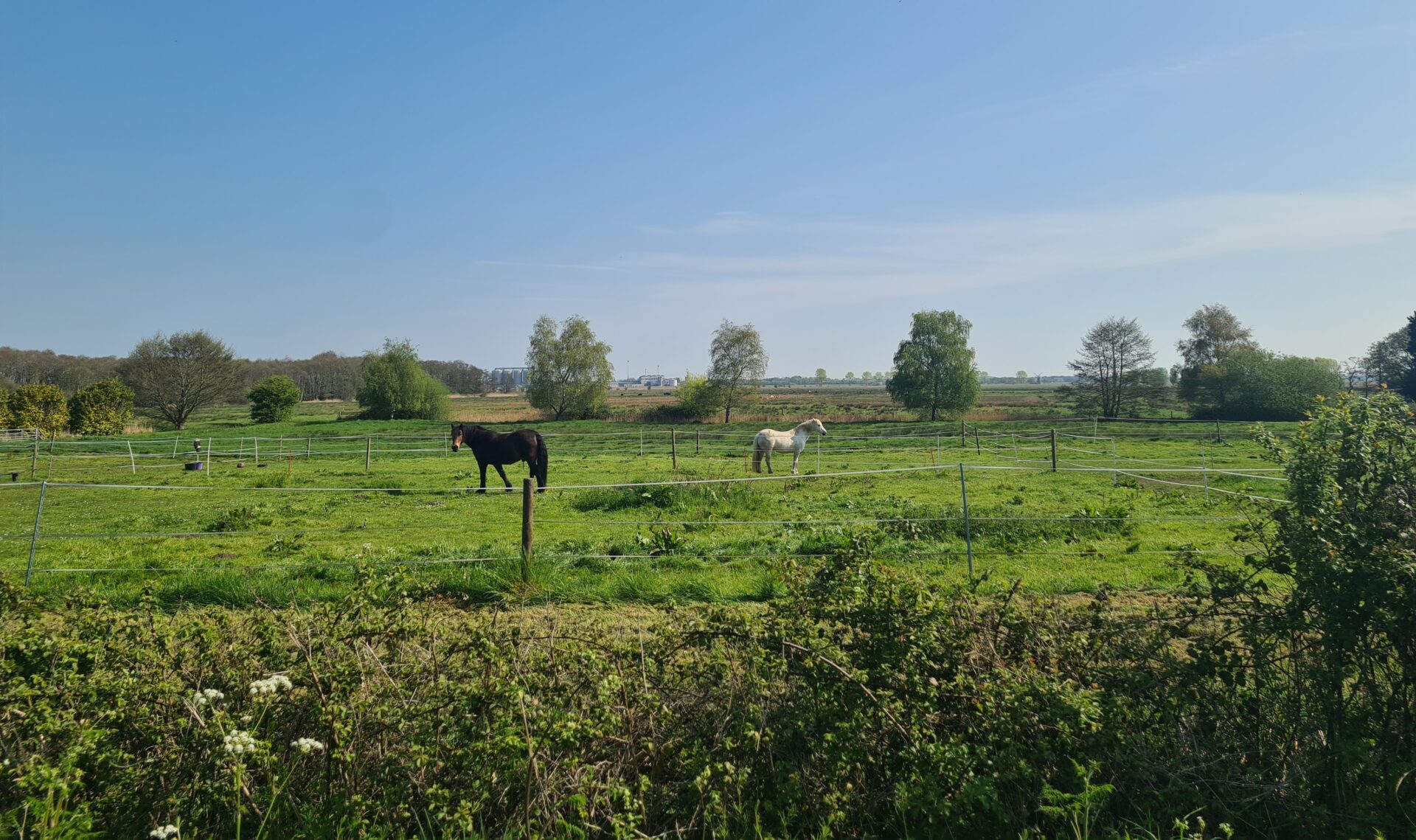
Walk around the back of St Margaret’s Church and you will see the Elizabethan Hardley Hall in the distance. Leave the church and turn left, then turn next right onto Cross Stone Road and then next left onto Cock Road. Continue straight over the next crossroads, then turn next right onto Staithe Road and then next left onto The Avenues. St Michael and All Saints’ Church, Langley is on your left.
There is a strong sense of this church’s ancient presence in the landscape. The tower dates to the 14th century and if you look closely you will see the line of an earlier roof. The font features heads, a shield and roses. Wooden framed windows were installed in the chancel in the 18th century. In 1802 Lady Mary Beauchamp bought a significant amount of 15th century glass from Rouen Cathedral that had been removed for safekeeping during the French Revolution. It was also installed at Chedgrave, All Saints and Thurton, St Ethelbert. Behind the church is Langley Hall, in the red brick Palladian style, which is now used as a school. The hall was built for Richard Berney in 1737 on land owned by Langley Abbey until the Dissolution of the Monasteries. To the north east of the church is the manor house Langley Grange. St Michael’s Church is usually open most weekends when there is someone on site. The noticeboard with the keyholder details is currently being refurbished.
Walk around the back of St Michael’s Church and through the trees to the edge of the field. These are the private grounds of Langley Hall which is now a school. Pupils attend services at the church. The hall was built for Richard Berney in 1737 on land previously owned by Langley Abbey and is just visible in the distance. Leave the church and turn left. At the crossroads turn right onto Ferry Road and you will see St Peter’s Church, Carleton St Peter on your left.
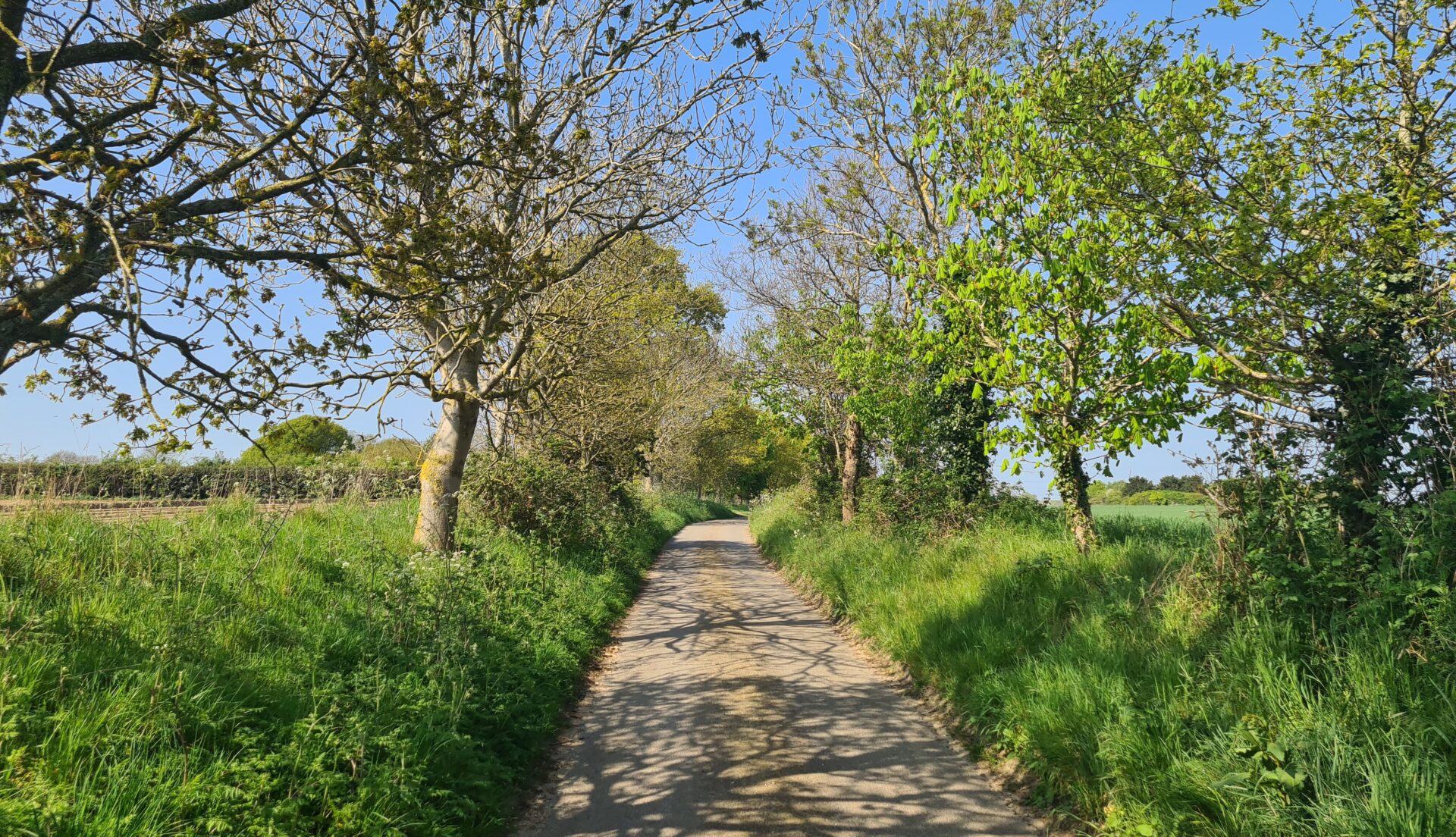
St Peter’s Church sits peacefully amongst the fields, at the end of a grassy path. It serves a parish of fifteen dwellings. Its true character shines through the 19th century restorations which saw the replacement of most of the windows. The outline of a 12th century Norman lancet window is visible near the south porch and a 13th century Early English lancet remains in use on the north side. The date 1672 is picked out in black flints at the top of the east face of the tower. Nave and chancel merge into one in ‘single hall’ construction. The delightful organ is hand-pumped and adorned with angel musicians. In the chancel the Easter Sepulchre, where the Easter Eucharist was kept from Good Friday to Easter Day, displays post-Reformation texts from the Gospel of John. Some of the original 15th century work has been incorporated into the rood screen. The roll of rectors on a board near the vestry begins in 1280, with 50 named having been added since then. Above the west window is the Royal coat of arms of Queen Victoria. Clear glass throughout the church creates a bright atmosphere, with the exception of stained glass in the east window depicting the crossed keys of St Peter.
St Peter’s, Carleton St Peter
Once you’ve left the church, turn right onto Ferry Road and then right onto Spong Lane. At the crossroads turn right onto Chapel Lane. At the T junction turn left onto Chapel Road. At the next junction turn right onto Church Road and you will see St Mary’s Church, Ashby St Mary on the right.
St Mary’s Church has a 15th century tower but what remains of the original church is much older. There is an impressive Norman arch over the south door featuring no less than seven different carved patterns and a small mass dial, and a Norman slit window on the north side of the nave. The Victorians carried out a thorough restoration of the church and installed new windows. The church has a lovely atmosphere, with a continuation of the nave into the chancel. Of interest is the holy water stoup, the poor man’s box and the beautiful 17th century communion rails. There is also a stained glass copy of the ‘Light of the World’ by Holman Hunt. Don’t miss the charming gravestones of George and Ann Basey who are shown surrounded by their Norfolk turkeys and geese.
St Mary’s, Ashby St Mary
Leave St Mary’s Church and turn right. At the next junction turn right and then left onto Green Lane. At the following junction turn right onto Hellington Hill and you will see St John the Baptist’s Church, Hellington on the left.
At first sight, St John the Baptist’s Church is a simple rural church, but the stonework of the 13th century porch with its three canopied niches shows clear signs of past splendour, as do the notable decorated windows, the fine Norman doorway with six separate patterns, and the evocative little stone heads that peer out from the carved stone arches. The Norman round tower has a later parapet and belfry openings. Inside there is a delicately carved Decorated chancel arch with leaf motifs on the capitals and corbel heads on the hood mould. This church is in the care of the Churches Conservation Trust.
St John the Baptist’s, Hellington
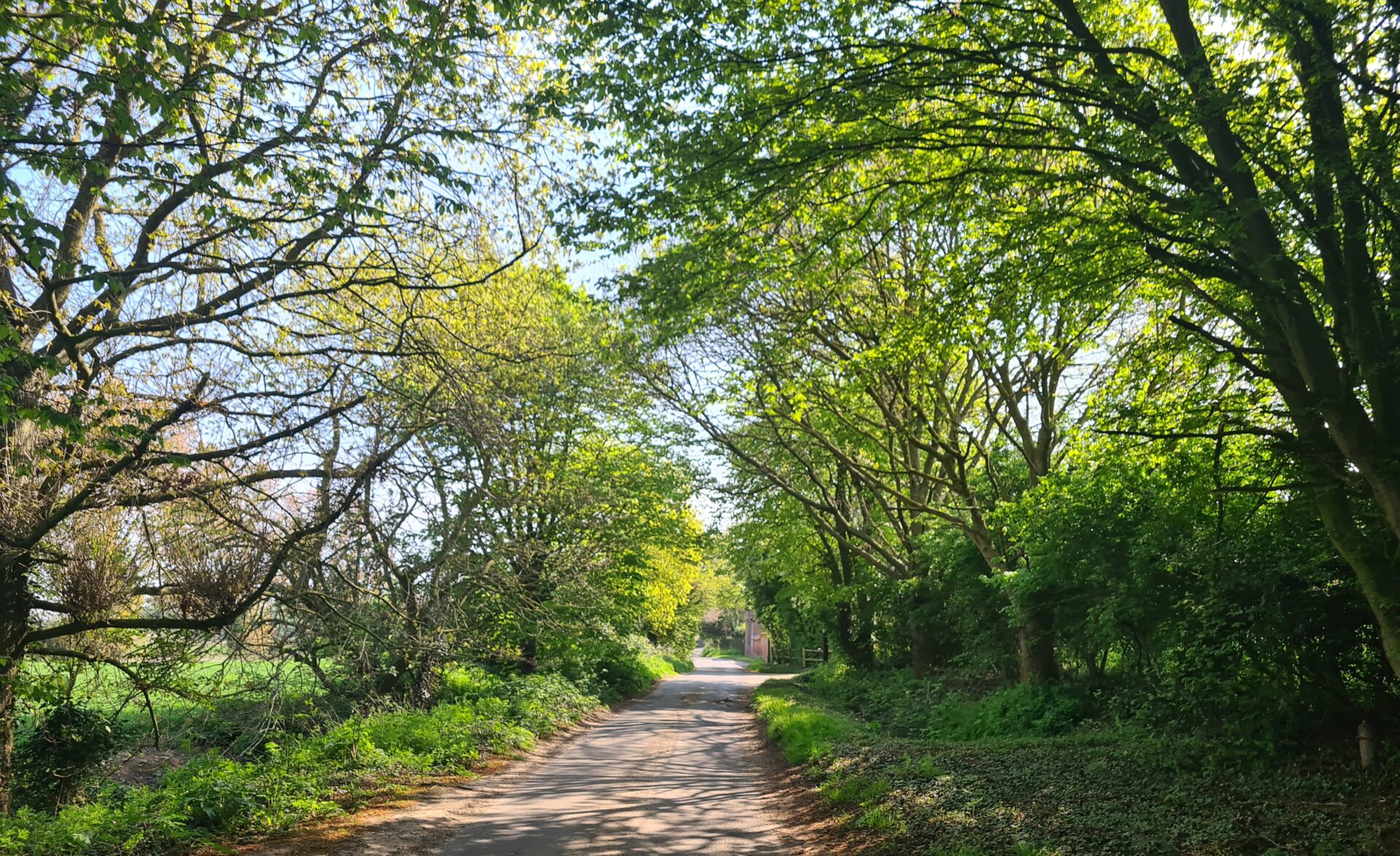
Leave the church and turn left. After around half a mile turn right onto Rectory Lane and St Mary’s Church, Rockland St Mary will be on your left.
St Mary’s Church retains its 14th century door, with original handle and ironwork. Three bells dated 1599 hang in the tower. The octagonal font dates from the 15th century and has been completely re-cut with angels bearing shields and cheerfully painted figures of saints. Above the substantial entrance door hangs a hatchment to Mary Hotblack, the black background indicating that she was unmarried or a widow. Nearby north windows have stained glass, which may be foreign, depicting two female heads, believed to be Martha and Mary. The roundels were salvaged from broken glass following the nearby explosion of a V2 rocket in WWII. The stained glass window depicts St George and the east window is dedicated to Mary, in commemoration of those who died in WWII. The church lost its thatched roof in 1892 when the porch was built and the pews installed and much other work was undertaken to give the church, like many others, a distinct Victorian influence. About four metres to the east of the chancel are the remaining flint fragments of St Margaret’s church. We have little idea what this building looked like as it has been a ruin for about 300 years.
St Mary’s, Rockland St Mary
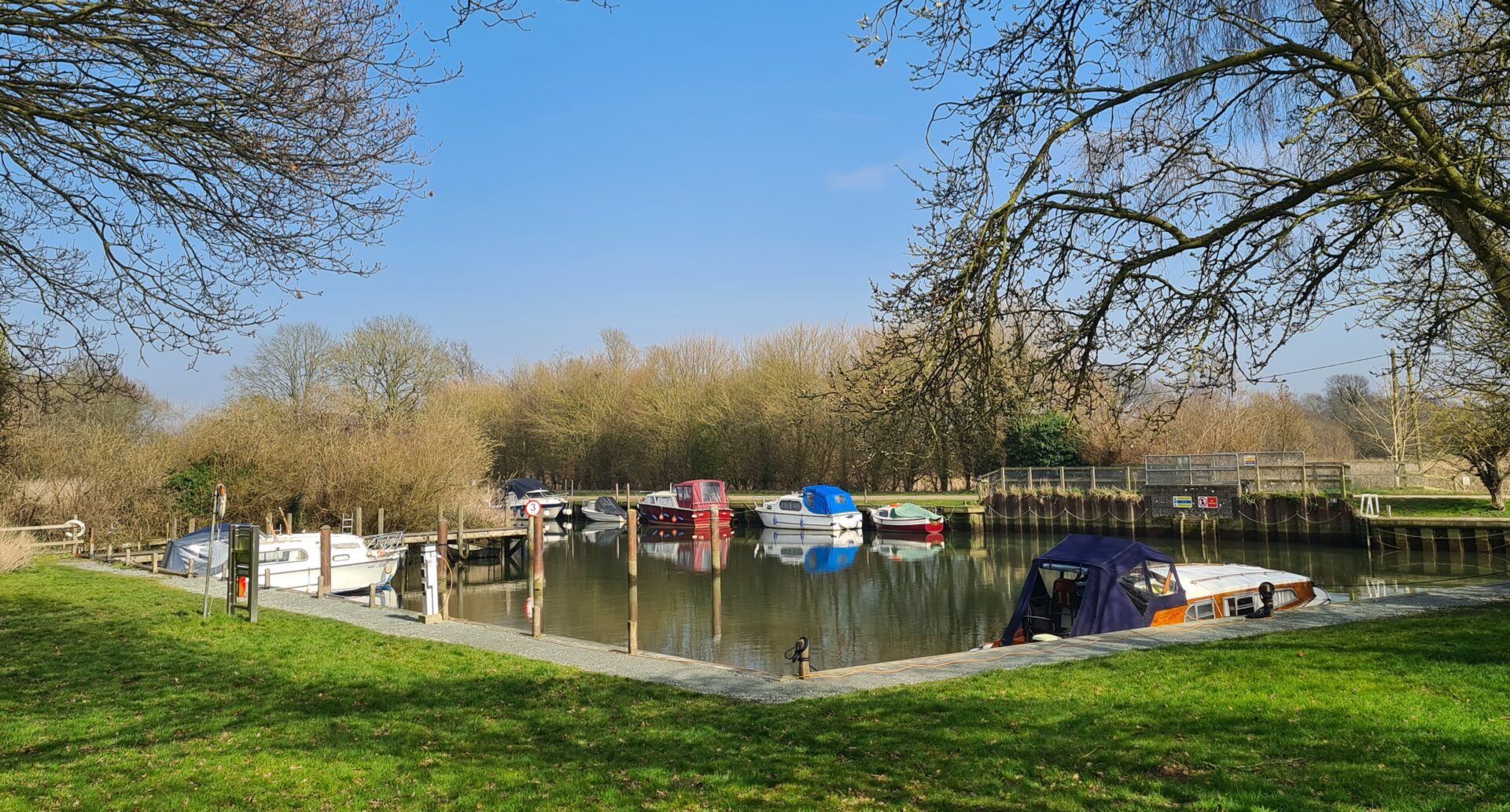 Rockland Staithe
Rockland Staithe
Leave the church and turn left then left again onto School Lane. At the T junction turn right onto The Street. Continue on this road and you will see Rockland Broad car park on your left.
